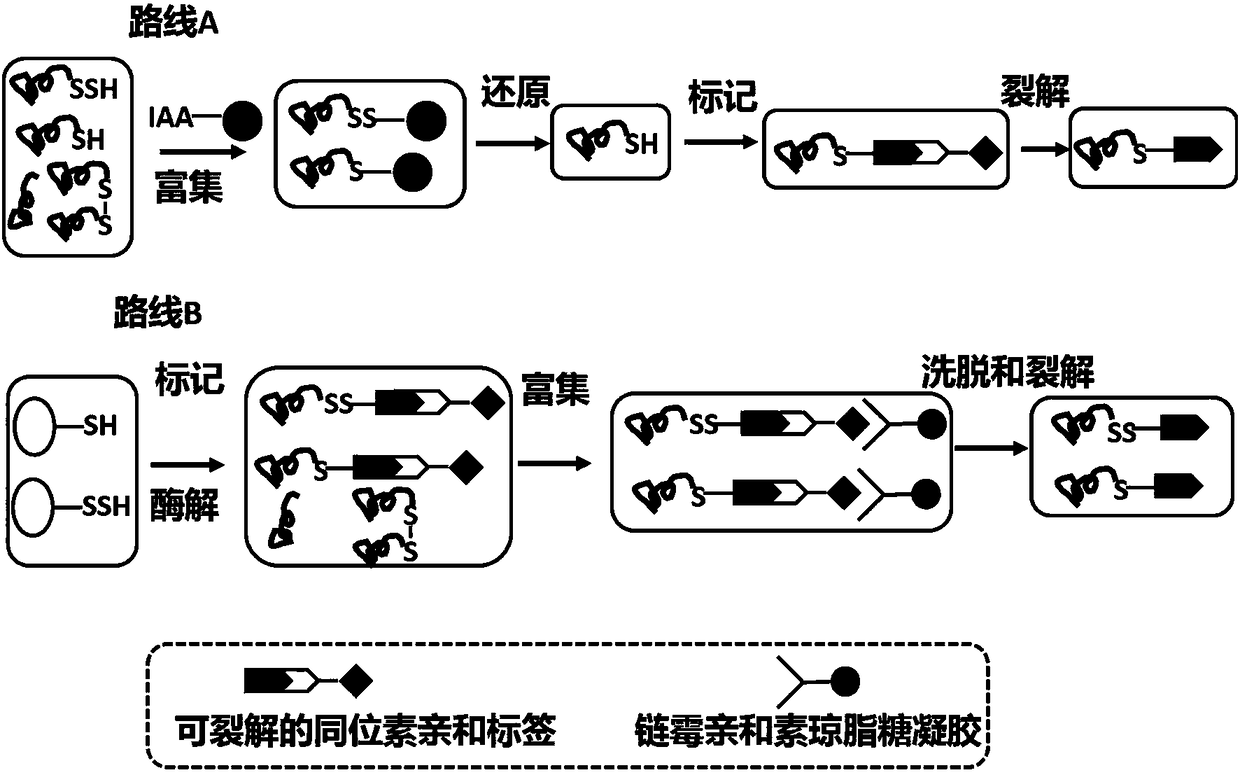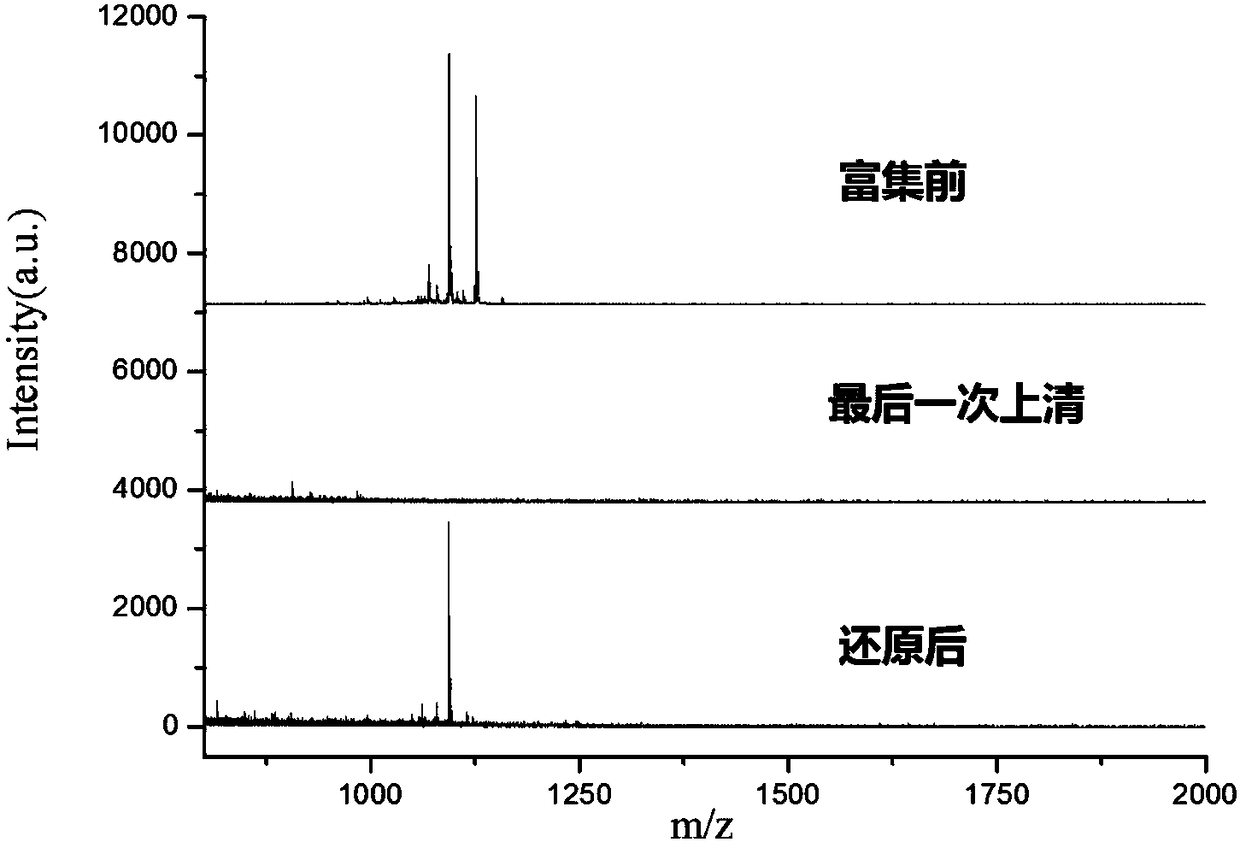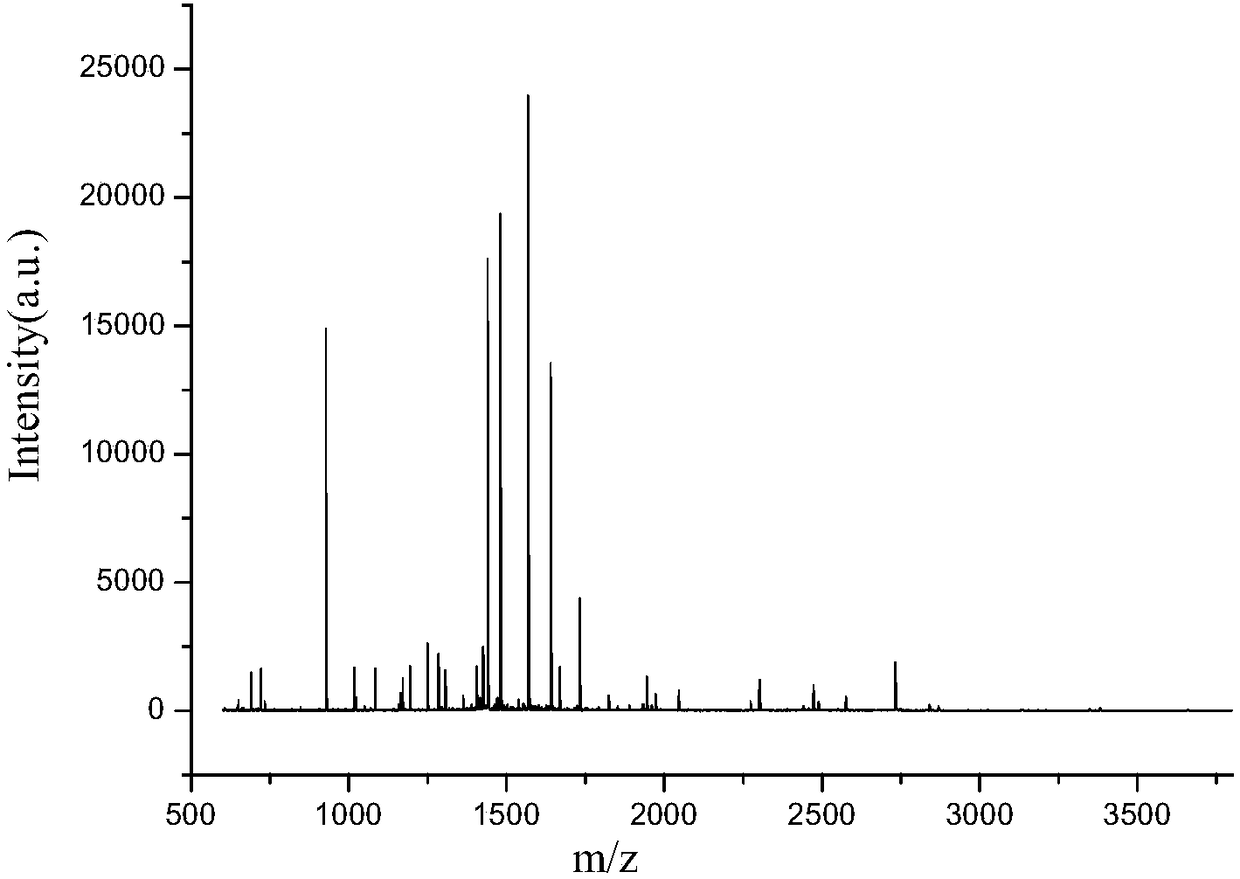Qualitative and quantitative method for thio thiolation post-translational modification peptide segment
A post-translational modification and peptide technology, applied in the direction of labels, measuring devices, and material inspection products used in chemical analysis, can solve the problems of R-SSH instability, loss of sulfhydrylation site information, false positives, etc. Achieve the effect of reducing the false positive rate of identification, improving detection efficiency and reliability
- Summary
- Abstract
- Description
- Claims
- Application Information
AI Technical Summary
Problems solved by technology
Method used
Image
Examples
Embodiment 1
[0023] Route A:
[0024] Preparation of iodoacetamide polymer microspheres: Weigh 13 mg of iodoacetic acid-N-hydroxysuccinimide ester, dissolve in 400 μL of methanol and 200 μL of 50 mM, pH 8.0 phosphate buffered saline mixed solution, shake and dissolve with 10 mg , 5μm, The amino polymer microspheres were reacted in the dark for 6h. After the reaction is completed, wash with phosphate buffer saline and methanol three times respectively, and dry in vacuum to obtain iodoacetamide polymer microspheres.
[0025] Enrichment and elution of thiothiol-labeled peptides by iodoacetamide polymer microspheres: Weigh 1 mg of iodoacetamide polymer microspheres, wash with 50 mM, pH 8.0 phosphate buffered saline three times, and then disperse in 200 μL phosphate buffered saline buffer salts. Add 2 μg of sulfur-thiol-labeled peptide and thiol-labeled peptide mixture, wherein the mass ratio of thio-thiol-labeled peptide and thiol-labeled peptide is 2:3, and react in the dark for 6 hours. ...
Embodiment 2
[0028] Route B:
[0029] Use a cleavable isotope affinity tag (AB SCIEX Company, P / N: 4337337) to label bovine serum albumin and enzymatic hydrolysis of bovine serum albumin: weigh 100 μg of bovine serum albumin, dissolve in 100 μL, 50 mM trimethylol Aminomethane, pH 8.3, 6M urea, 5mM ethylenediaminetetraacetic acid and 1M, 1μL of tris(2-carboxyethyl)phosphine were added, and denatured and reduced at 37°C for 1h. Then add 20 μL of a cleavable isotope affinity tag (AB SCIEX company, P / N: 4337337), and react at 37° C. in the dark for 2 hours. After labeling, the protein solution was transferred to a filter membrane with a molecular weight cut-off of 10,000 Da, and was centrifuged several times to remove excess labeling reagent and urea. Finally, 100 μL of ammonium bicarbonate and 3 μg of trypsin were added, and the enzyme was hydrolyzed at 37° C. for 12 hours. The next morning, centrifuge to collect the digested peptides. Matrix-assisted laser desorption ionization time-of-fl...
Embodiment 3
[0032] Identification and quantification of thiothiol peptides in complex samples: Extract 1×10 in 300 μL, 50 mM Tris, pH 8.3, 6 M urea, 5 mM EDTA 7 The protein of individual neuroblastoma cells is divided into two routes after the protein concentration is measured.
[0033] Route A
[0034] 200 μg of protein was removed and transferred to a filter membrane. The solvent was replaced, 200 μL of ammonium bicarbonate and 8 μg of trypsin were added, and the enzyme was digested at 37° C. for 12 hours. The next morning, centrifuge to collect the digested peptides. The enzymatically hydrolyzed peptides were reacted with iodoacetamide polymer microspheres in 50 mM, pH 8.0 phosphate buffered saline for 6 h in the dark. After completion of the reaction, wash with 30% acetonitrile and 2M sodium chloride to remove non-specific adsorption, then add 100 μL of tris(2-carboxyethyl)phosphine with a final concentration of 5 mM and reduce at 37°C for 1 h to release the thiomercapto peptide. ...
PUM
| Property | Measurement | Unit |
|---|---|---|
| particle diameter | aaaaa | aaaaa |
| particle diameter | aaaaa | aaaaa |
Abstract
Description
Claims
Application Information
 Login to View More
Login to View More - R&D
- Intellectual Property
- Life Sciences
- Materials
- Tech Scout
- Unparalleled Data Quality
- Higher Quality Content
- 60% Fewer Hallucinations
Browse by: Latest US Patents, China's latest patents, Technical Efficacy Thesaurus, Application Domain, Technology Topic, Popular Technical Reports.
© 2025 PatSnap. All rights reserved.Legal|Privacy policy|Modern Slavery Act Transparency Statement|Sitemap|About US| Contact US: help@patsnap.com



